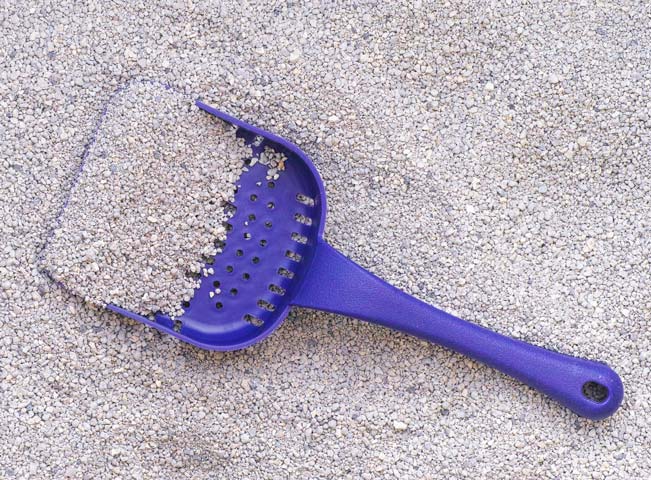What Kind of Cat Litter Should I Use?

It seems like an easy decision, but it isn't as simple as you might think. Choosing the type of litter to put in your cat's boxes isn't a matter you should leave to chance. It's also not something you want to mess around with changing often. That's because cats can be quite fussy about their litter, and if they don't like it, they often decide to eliminate somewhere else. Usually, that's your carpet, bed, or a pile of laundry.
To decide on the cat litter that's right for your household, you'll need to understand the different types that are available, what cats like and dislike about litter, and considerations for the humans and pets in the home such as dust production. Additionally, some cat litters are better for the environment than others. Litter that is mined from the earth and isn't biodegradable is popular, but you might wish to consider another choice.
Types of Cat Litter
Cat litter may be scented or unscented. In general, most cats dislike scented litter, which can be way too strong for their eyes and nose while they're in it.
There are four basic types of cat litter substrates available:
- Clumping clay litter. This is probably the most popular type of litter. It's usually bentonite, which is a type of clay mined from the earth that clumps up when moisture hits it. It's easy to scoop urine out of, which conserves litter because the rest stays dry. However, it's dusty and not biodegradable. Most veterinarians recommend not using clumping clay litter in kittens' litter boxes because they tend to play in and ingest litter and eating too much clumping litter can cause life-threatening intestinal obstruction.
- Non-clumping clay litter. This type of litter is also mined and usually dusty and non-biodegradable. However, it does not clump up when moisture hits it. Often, it's cheaper than other types of litter but there's more waste, so it doesn't last as long. It tends to be dusty.
- Crystal litter. There are multiple types of crystal litter available, mostly made of silica. It is super absorbent and lasts a long time with very little odor. Crystal litters are not dusty, and some of them change colors when a cat has a urinary tract problem, which can be helpful. They are often expensive. Some cats dislike crystals because their irregular shapes can be sharp and pokey.
- Litter made from natural products. These litters can be made of pine, corn, or wheat and are usually biodegradable. They do not tend to be dusty, but most of them also do not clump up. The exception is World's Best Cat Litter, which is made of cornmeal. One caution to use with these products is that if a cat has a food allergy to whatever the litter is made of, using the litter might cause a big reaction.
So, Which Cat Litter Should I Use?
Most cats like litter that is fine and soft, like sand. They prefer clumping litter and don't like fragrances. That's why clumping clay litter is so popular. However, World's Best Cat Litter is a natural alternative that ticks all the boxes for cats but is also biodegradable and not mined from the earth. It's naturally good-smelling for humans without added fragrances that cats dislike. Most cats and people love it.
A Note on Changing Cat Litter Type
If you decide to change your cat's litter type, do so slowly. A quick change could upset the cat and cause litter aversion. That, in turn, can lead to inappropriate urination, and that's not something you want to deal with if you don't have to.
Start by mixing the litters together, starting with only a small amount of the new litter. Keep a close eye on your cat to make sure he keeps using the box. Over a period of around two weeks, gradually use more of the new litter and less of the old, continuing to watch your cat's behavior closely. If he begins going over the box and then backing away, seems to take longer to "psyche himself up" to get into the box, or appears to be throwing more litter out of the box than usual with his paws, it means he's upset about the new litter, and you should do the change more slowly.
If you wish to check whether your cat likes a new type of litter right away, you can put two boxes near each other, one containing the old litter and one containing the new type, and see what he does.




